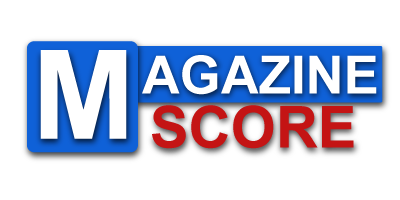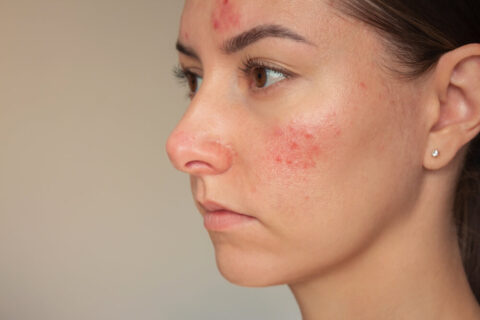The hang power is a dynamic and explosive weightlifting movement that plays a crucial role in strength training, power development, and athletic performance. It is a variation of the Olympic clean and serves as an essential exercise for athletes in various sports, including weightlifting, football, basketball, and track and field.
This article will provide an in-depth look into the hang power clean, including its benefits, step-by-step execution, key techniques, common mistakes, variations, and how to incorporate it into your training program. By the end, you will have a complete understanding of how to effectively perform and integrate the hang power into your workout regimen.
What is the Hang Power Clean?
The hang power clean is a weightlifting exercise that involves pulling a barbell from a hanging position (above the knees) and catching it in the front rack position while remaining above parallel in a partial squat. It is different from the full clean because it does not require a deep squat, making it more accessible for athletes and strength enthusiasts.
Key Characteristics of the Hang Power
- The lift starts from the hang position (not from the floor).
- The barbell is caught in the front rack position at or above a quarter squat.
- It emphasizes hip extension, speed, and power over absolute strength.
Muscles Worked in the Hang Power
The hang power is a full-body compound exercise that engages multiple muscle groups, making it one of the most effective movements for overall athletic development.
Primary Muscles Targeted:
- Legs (Quadriceps, Hamstrings, Glutes):
- These muscles generate power during the hip drive and triple extension.
- Back (Trapezius, Latissimus Dorsi, Erector Spinae):
- The traps and lats are responsible for the initial pull and shrug phase.
- Shoulders and Arms (Deltoids, Biceps, Forearms):
- Assist in pulling and stabilizing the bar during the lift.
- Core (Abdominals, Obliques, Lower Back):
- Helps maintain balance, stability, and control throughout the movement.
Benefits of the Hang Power
The hang power clean offers a wide range of benefits for athletes, lifters, and fitness enthusiasts alike.
1. Increases Explosive Power
- The rapid hip extension and force production mimic explosive movements required in sports like sprinting, jumping, and tackling.
2. Improves Athletic Performance
- The hang power enhances coordination, agility, and speed, making it a key exercise for sports performance.
3. Builds Strength and Muscle Mass
- Engages multiple muscle groups, promoting strength gains and hypertrophy in the lower and upper body.
4. Enhances Olympic Lifting Proficiency
- A foundational movement for those looking to improve their clean & jerk and snatch techniques.
5. Develops Grip and Forearm Strength
- Requires a strong grip, which translates to better performance in pulling exercises like deadlifts and rows.
6. Reduces Injury Risk
- Strengthens the posterior chain (glutes, hamstrings, and lower back), reducing the likelihood of injuries related to sports and heavy lifting.
7. Time-Efficient Exercise
- Engages the entire body in one movement, making it an effective addition to high-intensity workouts.
Step-by-Step Guide to Performing the Hang Power Clean
Executing the hang power with proper form is essential to maximize benefits and prevent injuries. Below is a detailed breakdown of the movement.
Step 1: Setup Position
- Stand with feet hip-width apart, barbell resting at mid-thigh level.
- Grip the bar with a shoulder-width grip (hook grip is recommended).
- Keep a neutral spine, shoulders slightly in front of the bar, and core engaged.
Previous article; Front Post Double Crochet (FPDC) A Complete Guide for Beginners and Experts
Step 2: Dip & Load the Hips
- Slightly bend your knees while maintaining an upright torso.
- Push your hips back slightly to generate tension.
- Keep your arms relaxed and the bar close to your thighs.
Step 3: Explosive Pull (Triple Extension)
- Drive forcefully through your heels, extending your hips, knees, and ankles (triple extension).
- Pull the bar upward close to your body.
- Shrug your shoulders aggressively, creating momentum.
Step 4: Pull Under & Catch
- As the bar reaches chest height, rotate your elbows forward quickly.
- Drop into a quarter squat, catching the bar in a front rack position.
- The barbell should rest on your shoulders with elbows high.
Step 5: Stand Tall & Reset
- Stand up fully with the barbell in the front rack.
- Reset by lowering the bar to the starting position in a controlled manner.
Common Mistakes and How to Fix Them
Even experienced lifters make mistakes in the hang power. Here are the most common errors and how to correct them.
1. Using Too Much Arm Strength
- Fix: Focus on hip drive rather than pulling with the arms. Arms should only guide the bar.
2. Catching the Bar with Low Elbows
- Fix: Snap your elbows up quickly to achieve a strong front rack position.
3. Not Extending the Hips Fully
- Fix: Ensure a complete triple extension (hips, knees, and ankles) before pulling under the bar.
4. Letting the Bar Drift Away from the Body
- Fix: Keep the bar as close to your torso as possible during the pull.
5. Poor Starting Position
- Fix: Maintain a neutral spine and ensure the bar is positioned correctly at the mid-thigh level.
Variations of the Hang Power
To keep your workouts dynamic, you can incorporate different variations of the hang power clean.
🔹 1. Hang Clean (Full Squat)
- Instead of catching the bar above parallel, drop into a full squat position before standing up.
🔹 2. Hang Power Snatch
- Similar to the hang power but caught overhead in a wide grip.
🔹 3. Dumbbell Hang Power
- Uses dumbbells instead of a barbell, allowing greater range of motion.
🔹 4. Hang Power with Pause
- Adds a pause at the hang position to build strength and control.
🔹 5. Block Power Clean
- Starts from blocks instead of the hang position, reducing strain on the lower back.
Programming the Hang Power Clean into Your Workouts
For Strength & Power:
- 3-5 sets of 3-5 reps
- Rest: 2-3 minutes between sets
- Load: 70-85% of 1RM
For Speed & Athleticism:
- 4-6 sets of 2-4 reps
- Rest: 1-2 minutes
- Load: 50-70% of 1RM
For Hypertrophy (Muscle Growth):
- 3-4 sets of 6-8 reps
- Rest: 1-2 minutes
- Load: 50-65% of 1RM
Conclusion
The hang power clean is an exceptional exercise for building strength, power, and athletic performance. Whether you’re an Olympic lifter, an athlete, or a fitness enthusiast, mastering this movement will significantly enhance your explosiveness, coordination, and overall strength.
By practicing proper form, avoiding common mistakes, and integrating the power clean into your training program, you will develop better movement mechanics, power, and athletic ability.
Start incorporating power cleans into your workouts today and take your strength and explosiveness to the next level!







